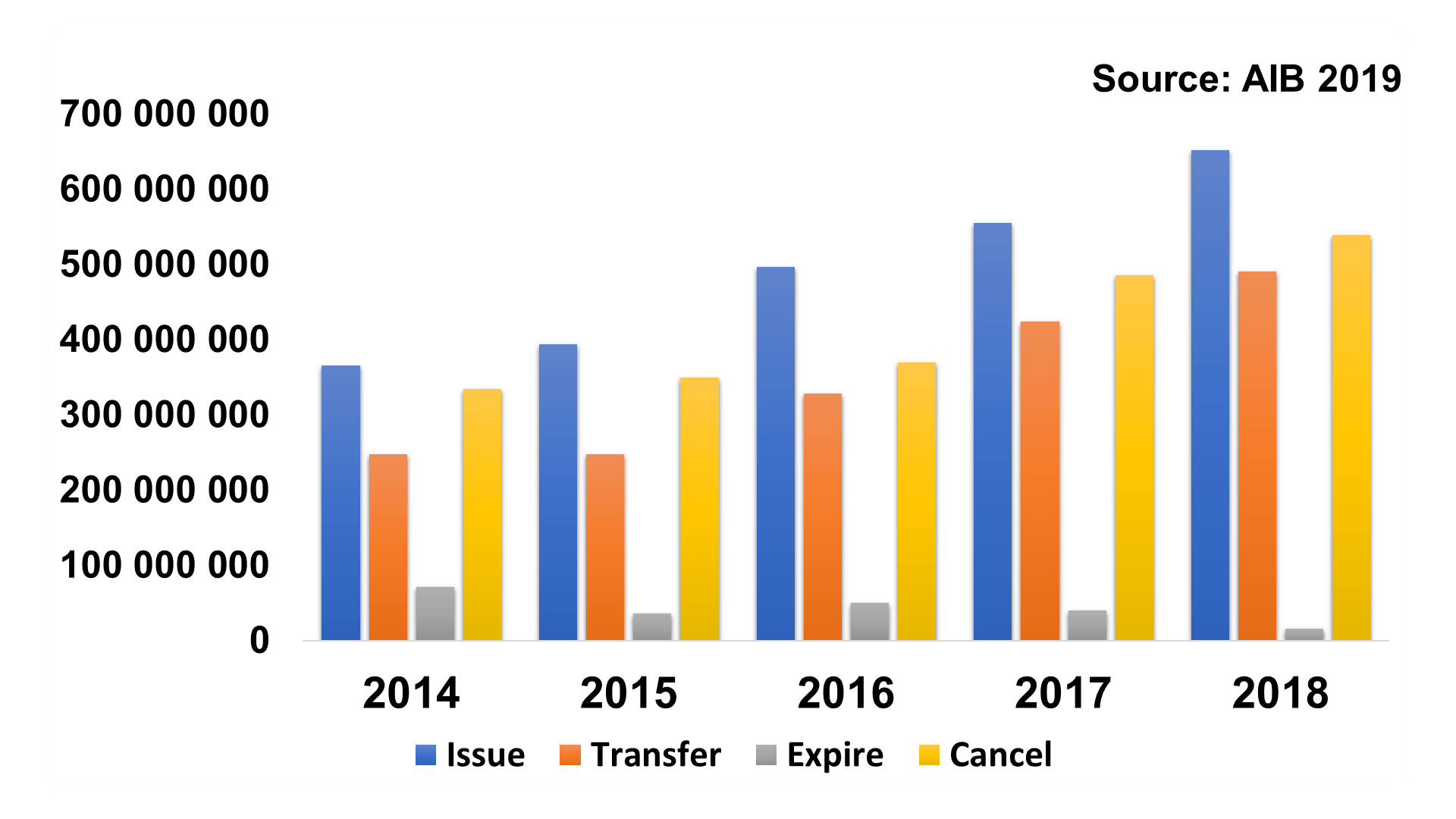
Basics
Learn the basics of energy certification
Introduction – What are Energy Certificates?
The electricity we use comes from a mix of sources produced at the time of consumption. So, in the physical sense, we cannot control or track the source of the actual electrons that light up our living room. We can, nevertheless, control that the energy source we want to consume has been produced and is attributed to us within the disclosure period. This is done with the help of Energy Certificates.
Use of energy certification in some form is very common. Within the European Union, it is mandatory, if claims on use of renewable energy are made. Each certificate contains information on the generation attributes (such as the energy source) of the energy production to which it refers. The attributes of energy certificates allow power suppliers to provide various energy products. They also ensure these origins are transparent to the end consumer.
The lifetime of energy certificates can be divided into three steps. The below example is for power:
- Producers are issued electronic certificates for units on electricity they produce and report. This one MWh typically corresponds to one energy attribute certificate.
- These certificates can be traded independently from the physical power.
- The value of the certificates is derived from their end-use. They can be used to comply with a set green quota and/or to prove that sold or consumed energy originates from the source identified in the certificate. This results in producers receiving the added monetary income from selling the certificates and more varied energy products in the market. These additional energy products enable improved consumer choice on the market.
For more information on energy certification in the European Energy Certificate System, see Association of Issuing Bodies-page.
Renewable producers gain extra revenue from selling energy certificates in the certificate markets

Issuing
The Issuing Body issues 1 energy certificate for each MWh of electricity production from a verified production plant and deposits the certificate into the account of the plant owner in the electronic registry
Transfer
Energy certificate, representing the generation attributes of the produced MWh can be traded in the certificate markets separately from the trade of electricity.
Cancellation
Electricity consumers or suppliers on their behalf purchase energy certificates and cancel them to comply with a set quota and/or to prove that consumed or sold electricity is renewable.
Two Types of Certificates -Quota and Tracking
Quota system
In a quota system (such as Renewable Portfolio Standard (RPS) or Renewable Purchase Obligation (RPO)) an obligation to buy energy certificates is imposed on a suitable party such as electricity suppliers and large electricity consumers.
The quota obligation is set as a percentage of total electricity sales/consumption, and non-compliance with the quota leads to a financial penalty, which is set higher than the market price of the certificates. The certificates are commonly named Green Certificates, but also Renewable Energy Certificates/Credits (RECs), elcertificates or Renewable Obligation Certificates (ROCs). In some systems the quota is set for producers of electricity from conventional sources.
 The quota X represents the share of targeted new renewable energy capacity. Quota imposed parties are required to obtain certificates for a volume of X% of annual electricity salesor consumption. There by the support for renewable energy producers is determined by the supply and demand of certificates.
The quota X represents the share of targeted new renewable energy capacity. Quota imposed parties are required to obtain certificates for a volume of X% of annual electricity salesor consumption. There by the support for renewable energy producers is determined by the supply and demand of certificates.Tracking certificates
Tracking certificates, such as Guarantees of Origin (GOs) in the EU and Renewable Energy Credits (RECs) in the US, are used (cancelled/redeemed) by consumers or electricity suppliers on their behalf to guarantee the energy source of consumed or sold electricity.
Private consumers purchase certified electricity from suppliers to express environmental values, whereas large consumers use it to “green” their energy mixfor e.g. labeling, adding value to secondary products, meeting environmental standards, carbon accounting, altruism etc…
Electricity, which is not tracked with tracking certificates, constitutes the residual mix and is disclosed to customers not buying certified electricity from a specific energy source. This is crucial for the reliability of the tracking system.
The key difference between quota and tracking system is that in the former the purchase of certificates is based on obligation whereas in the latter on a voluntary choice.
Hybrid systems
Despite the difference, hybrid systems exist. This means a single certificate is usable for both quota and tracking. In the US, for example, the two systems are bundled so that a REC certificate can be used for both, complying with quota and for claims regarding the origin of electricity.
A separated approach (multi-certificatesystem) is taken by Sweden and Norway, where two certificates are issued for each MWh of production for different purposes: an elcertificate, for quota, and a Guarantee of Origin, for tracking. A quota imposed party can’t use the guarantee of origin to fulfill its quota, nor can it use the elcertificate to make claims for the energy source.
Energy Certification Process
The mandated national competent body, which is often a Transmission System Operator (TSO) or an Energy Market Agency of the country, is the responsible party for the energy certification process. Certificates are issued, traded and cancelled in accounts residing in central registries, of which usually one exists per country.
Market participants are required to open an account in the central registry in order to register production devices, own certificates and perform transactions.Owning and trading certificates is generally not restricted, but usually only companies acting in the electricity wholesale market apply to open an account.
Certificates are issued in the nominated account against verified meter readings of registered production devices, e.g. deriving from imbalance settlement calculation of the TSO. After the certificates are issued, account holders can execute transactions on certificates.Typically the first transaction is a transfer, in which the ownership of the certificate is transferred to another account holder. In practice transfers are made in electronic registries over the internet using a standard web browser in similar manner to making payments using internet banking.
The final user of the certificate uses (cancel/redeem) it for one or both of the purposes previously described, depending on the type of the certificate (quota, tracking or hybrid).
Practically all highly developed electricity markets make use of energy certification in some form, most commonly for renewable energy. An Energy certificate contains information of the generation attributes (such as the energy source, capacity and age of the plant) of the electricity production to which it relates.
Transfers of certificates are made in or between accounts in national registries under the supervision of the competent body.

Energy Certificate Markets
There is no such thing as an universal energy certificate market. Rather, there are tens of certification schemes constituting separate markets. Many schemes are national markets for guarantees of origin, support certificates, biomethane, etc. certificates. There are also international schemes, such as I-REC, ERGaR for gas certificates, and CertifHy for green and low carbon hydrogen certificates. The most prominent energy certificate market is the European Energy Certificate System Guarantee of Origin Market (EECS-GO) with over 600 TWh annual issuing volume.
Transactions of EECS certificates during 2014 –2018

Grexel’s role
To implement solid energy origin certification, the Issuing Body needs a solid registry solution. We provide our customers with high-quality registry systems and consulting services. We have operated in Guarantees of Origin-industry for decades. During that time, we have set up registries, consulted in the creation of national schemes and written of disclosure legislation as well as calculated the European Residual Mix. You can find more information on our projects and customers here.
Our experienced team has strong understanding of the market. They are happy to provide you with hands-on assistance with market design and regulatory development. We use our expertise in the energy market to help you design the proper legislation and regulations. These serve as a foundation for an energy certificate market in your country, making sure that every local particularity is considered.
Furthermore, our team has profound understanding on the European regulation and standards. We can help you implement necessary legislation, regulation and domain protocols for EECS guarantees of origin and electricity disclosure. We can also address your specific local requirements such as administrative procedures, metering systems and integration into the surrounding infrastructure.
See more under Consulting.
We are best known for our comprehensive registry systems and their excellent usability. We also take pride in our customer satisfaction and the high quality of service we provide.
Our registry solutions are the most used in Europe. We can offer the software to our customers as a service.
See more under Registry Services.
Scientific Contributions
Grexel® has been shaping the energy certification field since its dawn. We are engaged in its development, also from a non-business perspective.


